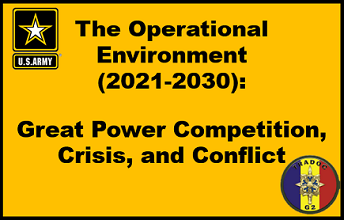[Editor’s Note: Mad Scientist Laboratory is pleased to feature today’s blog post, excerpting the key judgements from the TRADOC G-2’s new publication, The Operational Environment (2021-2030): Great Power Competition, Crisis, and Conflict. This document complements previous publications exploring the Operational Environment (OE), expanding the Army’s understanding of Competition, Crisis, and Conflict with our Pacing Threats (Russia and China) in the decade ahead.  These adversaries are now engaged in a race to compete with the United States globally. This Competition has extended to the two areas where the Army has enjoyed its historical advantages: in the ability to fight the way we wish to fight and in human capital. Our Pacing Threats’ challenge to the Army is more than a multi-domain challenge on the battlefield; it is also a challenge across doctrine, organization, training, materiel, leadership and education, personnel, facilities, and policy (DOTMLPF-P) — Read on!]
These adversaries are now engaged in a race to compete with the United States globally. This Competition has extended to the two areas where the Army has enjoyed its historical advantages: in the ability to fight the way we wish to fight and in human capital. Our Pacing Threats’ challenge to the Army is more than a multi-domain challenge on the battlefield; it is also a challenge across doctrine, organization, training, materiel, leadership and education, personnel, facilities, and policy (DOTMLPF-P) — Read on!]
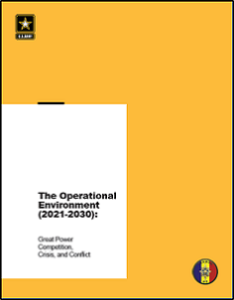 The Operational Environment (2021-2030): Great Power Competition, Crisis, and Conflict is intended to build on the OE analysis found in TRADOC Pamphlet 525-92, The Operational Environment and the Changing Character of Warfare. While that document focused heavily on OE conditions, namely on the development of new technologies and their impact on warfare, it paid less attention to the activities of our potential Pacing Threats. Furthermore, although it referenced pandemics as a possible threat to the Homeland, the impacts of the
The Operational Environment (2021-2030): Great Power Competition, Crisis, and Conflict is intended to build on the OE analysis found in TRADOC Pamphlet 525-92, The Operational Environment and the Changing Character of Warfare. While that document focused heavily on OE conditions, namely on the development of new technologies and their impact on warfare, it paid less attention to the activities of our potential Pacing Threats. Furthermore, although it referenced pandemics as a possible threat to the Homeland, the impacts of the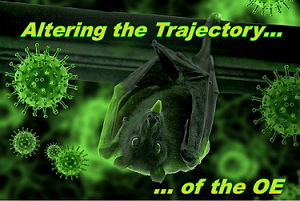 COVID-19 pandemic on the OE represent a significant shock to the system that required new analysis. This context is addressed in Chapter 1 to introduce readers to the need for this assessment.
COVID-19 pandemic on the OE represent a significant shock to the system that required new analysis. This context is addressed in Chapter 1 to introduce readers to the need for this assessment.
Chapter 2 presents the activities of our two Pacing Threats, China and Russia, and their efforts to develop and modernize their militaries and to focus on prevailing in Competition, Crisis, and Conflict against the United States.
-
-
- While the United States was engaged in counterinsurgency operations in Iraq and Afghanistan, our adversaries studied us and determined that the best way to defeat the United States is to win without fighting. If it comes to Conflict, our adversaries want to use stand-off capabilities to
 separate the United States population internally, separate the elements of the Joint Force, and separate us from our allies and partners.
separate the United States population internally, separate the elements of the Joint Force, and separate us from our allies and partners.
- While the United States was engaged in counterinsurgency operations in Iraq and Afghanistan, our adversaries studied us and determined that the best way to defeat the United States is to win without fighting. If it comes to Conflict, our adversaries want to use stand-off capabilities to
-
-
-
- Our Pacing Threats will contest us in every domain and across the diplomatic, information, military, and economic spheres in Competition, Crisis, and Conflict.
-
-

- While the United States invested in equipment and capabilities for the counterinsurgency fight, our Pacing Threat adversaries invested in capabilities that provide them with a degree of overmatch in a few key areas.
-
-
- Technology among peer and near-peer competitors will be roughly equivalent; the side with the best people and the best approach to Competition, Crisis, and Conflict will have the advantage.
-
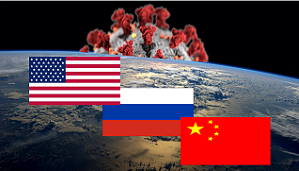 Chapter 3 focuses on the COVID-19 pandemic, and most importantly, on its impact on the OE in terms of the power dynamic between the United States, China, and Russia. It offers four potential alternative futures — called worlds — to consider the impact of the pandemic in terms of Competition, Crisis, and Conflict.
Chapter 3 focuses on the COVID-19 pandemic, and most importantly, on its impact on the OE in terms of the power dynamic between the United States, China, and Russia. It offers four potential alternative futures — called worlds — to consider the impact of the pandemic in terms of Competition, Crisis, and Conflict.
-
-
- The Status Quo Reprieve world represents a continuation of the pre-COVID-19 OE with little real change resulting from the pandemic. This means our Pacing Threats will continue to develop their capabilities along a steady track to become true near peers around 2030.
-
-
-
- The Relative Advantage world postulates a future in which the impacts of the pandemic on the United States, China, and Russia are relatively equal, but the centralized organization and economies of our Pacing Threats allow them to focus more on defense than a general recovery as in the United States. In this case, the OE speeds up, and China and Russia pose a significant challenge by 2025-2028. We view this as the most likely outcome.
-
-
-
- The most dangerous outcome is the Mind the Gap world, in which our adversaries recover quickly, while the United States craters. Under these conditions, our adversaries’ modernization programs rocket forward, posing a direct challenge to the United States in the next few years.
-
-
-
- Finally, the best case outcome is the New Renaissance world, in which the U.S. ability to innovate allows it to recover more quickly, while our adversaries struggle. This allows the United States to outpace its rivals across the diplomatic, information, military, and economic spheres.
-

Chapter 4 provides a deeper insight into the impact of our adversaries’ modernization efforts, which directly challenge the key pillars of the U.S. Army’s post-DESERT STORM dominance in the land power domain.
-
-
- Our dominance rested on three assumptions:
-
-
-
-
- We are the best equipped Army in the world;
-
-
-
-
-
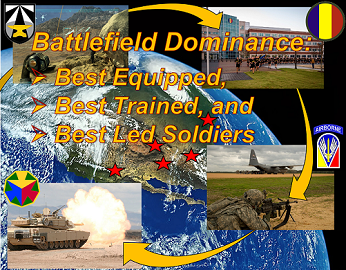 We have the best trained Soldiers and the most dynamic leaders; and
We have the best trained Soldiers and the most dynamic leaders; and
-
-
-
-
-
- Our ability to conduct maneuver warfare is unmatched.
-
-
-
-
- This dominance rested on efforts the Army made across doctrine, organization, training, materiel, leadership and education, personnel, facilities, and policy. While there is much focus on the materiel aspects of our adversaries’ modernization efforts, materiel advantage may be fleeting.
-
-
-
- Our adversaries understand this and are contesting us across the other factors that deal with human capital; these advances may be more long-lasting.
-
-
-
- Most notably, our adversaries have conceived of new approaches to warfare, namely Russian “New Generation Warfare” and Chinese “intelligentized warfare”; hold
 large-scale exercises designed to practice these approaches and to improve their force; developed new combat training centers; and are designing new professional military education that aims to create a culture of learning.
large-scale exercises designed to practice these approaches and to improve their force; developed new combat training centers; and are designing new professional military education that aims to create a culture of learning.
- Most notably, our adversaries have conceived of new approaches to warfare, namely Russian “New Generation Warfare” and Chinese “intelligentized warfare”; hold
-
-
-
- As our adversaries modernize and the OE possibly accelerates, are we doing enough, fast enough to keep pace?
-
We want to hear your feedback regarding The Operational Environment (2021-2030): Great Power Competition, Crisis, and Conflict — drop us an email at madscitradoc@gmail.com and tell us what you think!
If you enjoyed this post, check out the following related content:
Russia: Our Current Pacing Threat, The Bear is Still There: Four Insights on Competition with Russia, and our Russia Products page.
China: Our Emergent Pacing Threat, Competition and Conflict in the Next Decade, Disrupting the “Chinese Dream” – Eight Insights on how to win the Competition with China, “Intelligentization” and a Chinese Vision of Future War, the TRADOC G-2’s China Tri-fold, and our China products page.
Sub-threshold Maneuver and the Flanking of U.S. National Security, by Dr. Russell Glenn
The Convergence: Hybrid Threats and Liminal Warfare with Dr. David Kilcullen and listen to the associated podcast
“Once More unto The Breach Dear Friends”: From English Longbows to Azerbaijani Drones, Army Modernization STILL Means More than Materiel, by Ian Sullivan
Two of our insightful entries from this Spring’s Mad Scientist Writing Contest on Competition, Crisis, Conflict, and Change: proclaimed Mad Scientist CPT Anjanay Kumar‘s winning entry – The U.S. Joint Force’s Defeat before Conflict; and semi-finalist 1LT Carlin Keally‘s entry – A House Divided: Microtargeting and the next Great American Threat
… and explore the U.S. Army’s single consistent OE narrative (spanning the near, mid-, and far terms out to 2050) further with the following content:
Four Models of the Post-COVID World, The Operational Environment: Now through 2028, and The 2 + 3 Threat video
The Future Operational Environment: The Four Worlds of 2035-2050, the complete AFC Pamphlet 525-2, Future Operational Environment: Forging the Future in an Uncertain World 2035-2050, and associated video
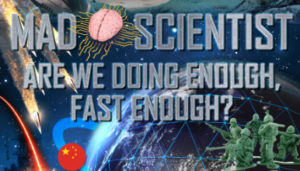 >>>REMINDER: Young Minds on Competition and Conflict, the next webinar in our continuing series of Are We Doing Enough, Fast Enough? virtual events – explores our adversaries’ views on Competition, Crisis, Conflict, and Change on Thursday, 6 May 2021 (starting at 1000 EDT). Join our panel of prominent young minds from the national security arena as they share their ideas about the future of competition and conflict for the next decade. Register here now [via a non-DoD network] to participate in this informative event.
>>>REMINDER: Young Minds on Competition and Conflict, the next webinar in our continuing series of Are We Doing Enough, Fast Enough? virtual events – explores our adversaries’ views on Competition, Crisis, Conflict, and Change on Thursday, 6 May 2021 (starting at 1000 EDT). Join our panel of prominent young minds from the national security arena as they share their ideas about the future of competition and conflict for the next decade. Register here now [via a non-DoD network] to participate in this informative event.

